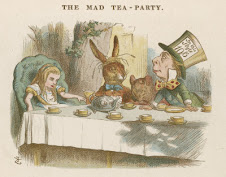It was easier in the 19th century for regional or small start-up parties to get on the ballot and infuse elections with ideas such as the abolition of slavery, a woman’s right to vote, worker and farmer reforms—all of which we take for granted today, though the minor parties first advocating these rights did not win the presidency . . . I have an intimate knowledge of these ballot access burdens because I managed the Nader’s 2000 and 2004 presidential campaigns and had to navigate through these laws and oversee or instigate nearly four dozen lawsuits to defend against or seek reform of their ill effects . . .
Today, as in 1958, ballot access for minor parties and Independents remains convoluted and discriminatory. Though certain state ballot access statutes are better, and a few Supreme Court decisions (Williams v. Rhodes, 393 U.S. 23 (1968), Anderson v. Celebrezze, 460 U.S. 780 (1983)) have been generally favorable, on the whole, the process—and the cumulative burden it places on these federal candidates—may be best described as antagonistic. The jurisprudence of the Court remains hostile to minor party and Independent candidates, and this antipathy can be seen in at least a half dozen cases . . .
This license, in effect, to discriminate against third parties and Independents—as well as the Court’s general reluctance to require much substantiation of “state interests” when states proffer that rationale to defend discriminatory laws—have not made it easy to be an Independent or the candidate of a Green, Libertarian, Socialist or Constitution Party, not to mention all the others . . .The burdens faced by minor party and Independent candidates are systemic. First, there are 51 different sets of Byzantine rules, written the by the partisan members of the legislatures of the fifty states and the District of Columbia. As the major parties are usually automatically on the ballot, the partisan legislators show little concern for leveling the ballot access playing field for challengers to their incumbency or parties . . .
many of these ballot access laws are blatantly unconstitutional—as in they have already been held by the courts to be so, but the administrators of the elections cannot get their own state’s legislatures to bring the election codes into compliance with judicial rulings . . .
The question we should be asking is why we continue to permit this injustice when no other western country puts its third party and Independent candidates through the kind of hazing process ours does? The congressional incumbency rate (routinely in the 90th percentile) reflects the often uncontested or merely predictable-by-landslide-proportions state of our congressional elections.
The Two-Party State and the Duopolized Ballot
In the Harvard Law Record, Teresa Amato shows how the "two party ballot suppresses third party change":
Labels:
ballot access,
collusion,
exclusion,
historical
Subscribe to:
Post Comments (Atom)







No comments:
Post a Comment